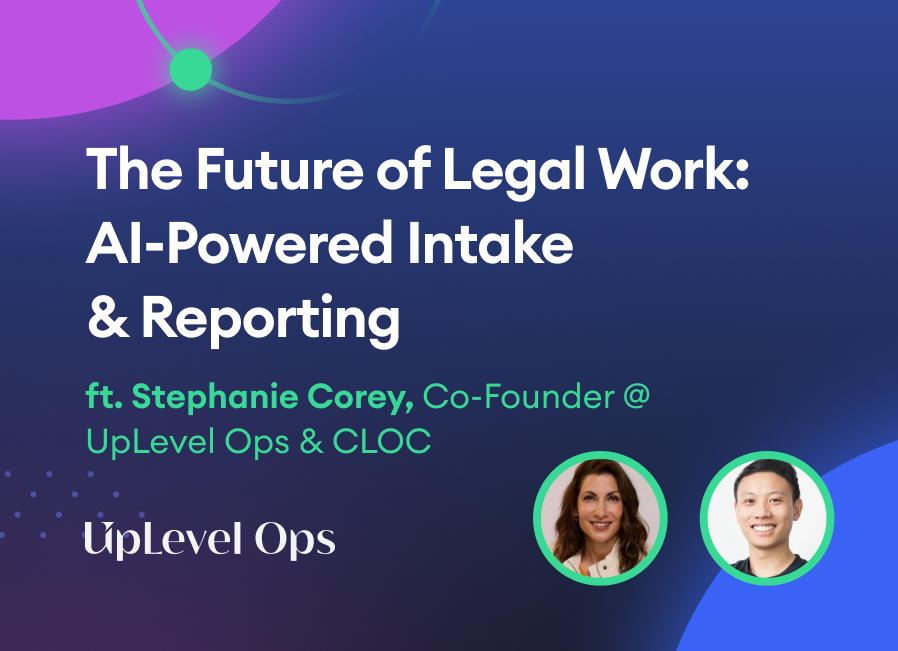Webinar
Workflow Automation for Legal 101
Join us as we explore the world of legal automation from the fundamentals of - what is it, how is it different and why do legal operations teams, from new to established, center their strategy around it.
- 5:12 Defining Workflow Automation
- 10:23 Characteristics of Workflow Automation
- 12:04 Benefits of Workflow Automation
- 13:08 Legal Teams' Focus on Contracting Workflows
- 13:39 Workflow Automation as the Swiss Army Knife of Legal Ops
- 14:11 Workflow Automation as a Vehicle or Transit System
- 14:41 Leveraging Technology to Streamline Processes
- 15:10 Balancing High-Value Work with Routine Tasks
- 16:06 Workflow Automation's Intersection with Enterprise IT
- 17:00 Workflow Automation's Natural Fit in Legal
- 18:06 Unique Characteristics of Legal Workflow Automation
- 19:08 The Focus on Self-Service Contracting
- 20:10 Integration and Template Benefits in Legal Workflow Automation
- 21:31 Changing Perceptions of Legal as a Cost Center
- 22:00 Legal Demonstrating Impact on Revenue and Business
- 22:28 Shifting Processes to Structured Formats for Analytics
- 22:56 Utilizing Data for Business Insights and Efficiency
- 23:23 Analyzing Process Bottlenecks and Enhancing Efficiency
- 23:53 Managing Legal Reputation and Demonstrating Value
- 24:22 Continuous Improvement through Workflow Analytics
- 24:49 Workflow Automation's Role in the Legal Tech Stack
- 25:18 Workflow Enhancing Value Across Legal Technologies
- 25:44 Workflow as the Front Door to Legal Requests
- 26:19 Workflow as the Catch-All for Specialized Use Cases
- 27:16 The Strategic Role of Workflow in Legal
- 28:19 Workflow's Flexibility and Business Value
- 29:16 Workflow as the Front Door, Plumbing, and Catch-All
- 30:18 Workflow's Viral Spread Across Departments
- 32:07 Maximizing Value and Visibility with Workflow Automation
- 33:04 Understanding Workflow Automation in the Industry
- 33:32 Differentiating Workflow Automation Platform vs. Feature
- 34:05 Licensing Structure of Workflow Automation
- 34:38 User Experience in Workflow Automation
- 35:09 User-Friendly Interfaces for Non-Legal Participants
- 36:06 Workflow's Adaptability to Various Use Cases
- 37:02 User-Centric Workflow Experience and Integration
- 37:29 User Experience Similar to Insurance Website Products
- 38:24 The Virtue of Simplicity in User Experience
- 38:50 Launching Workflow from Different Entry Points
- 39:17 Integration and Data Risk Mitigation
See Related

Webinar
44 Minutes
.jpg)
Webinar
51 Min

Webinar
56 Minutes

Webinar
44 Minutes

Webinar
59 Minutes

Webinar
56 Minutes

Webinar
50 Minutes

Webinar
55 Minutes
.jpg)
Webinar
48 Minutes

Webinar
57 Minutes

Webinar
56 Minutes



.jpg)